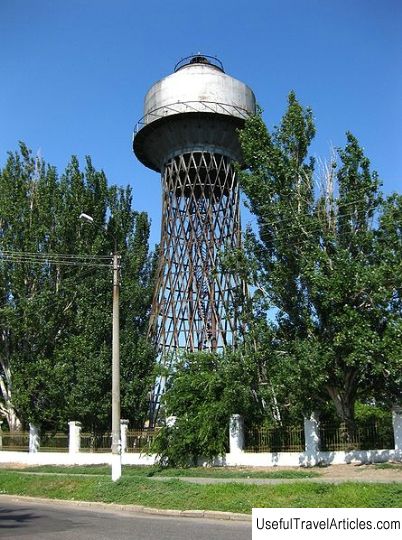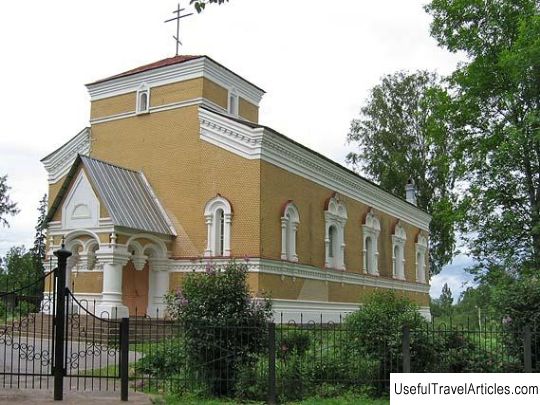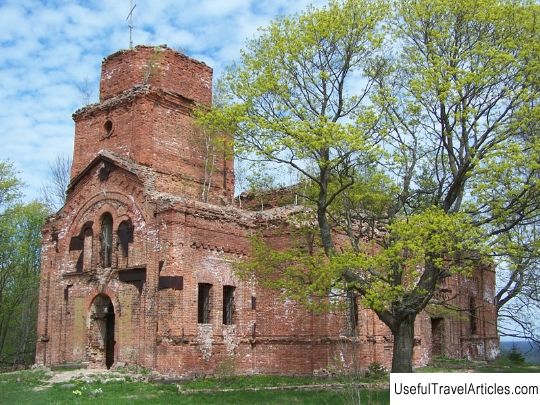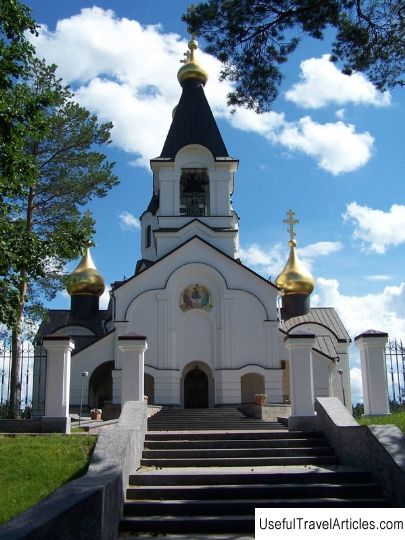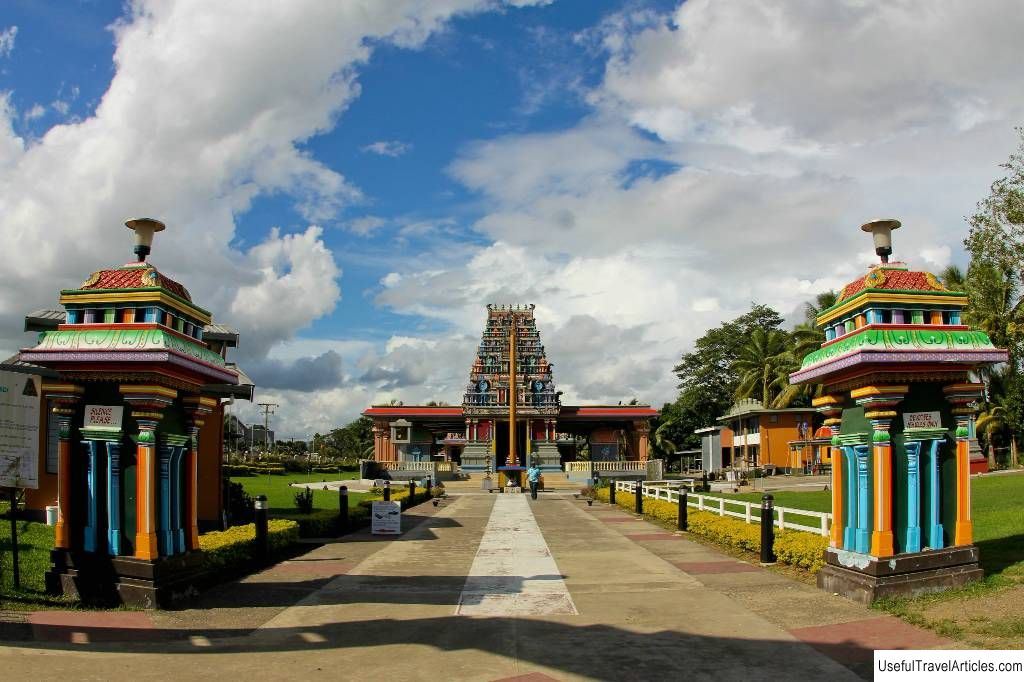Church of St. Nicholas the Wonderworker in the village of Kotly description and photos - Russia - Leningrad region: Kingiseppsky district
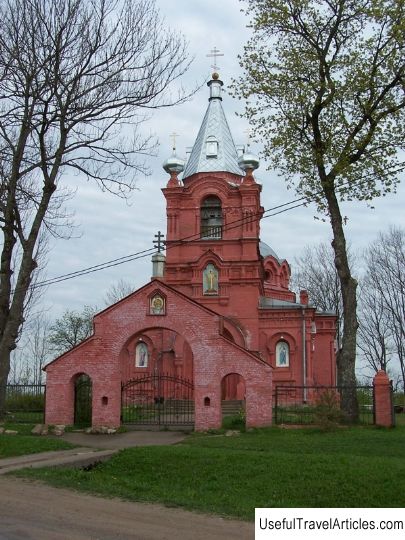
Church of St. Nicholas the Wonderworker in the village of Kotly description and photos - Russia - Leningrad Region: Kingisepp District. Detailed information about the attraction. Description, photos and a map showing the nearest significant objects. Photo and descriptionThe Church of St. Nicholas the Wonderworker is located 120 km from St. Petersburg, in the Kingisepp district, in the old village of Kotly. The name of this village may have come from "boilers" or pits that were used for cooking tar or from the nature of the terrain in the form of a hollow. In the vicinity of the village, there were vast deposits of brown iron ore, therefore, since the 15th century, most of the local residents have been engaged in iron ore mining, as well as forcing tar. At that time, Kotly became the center of the Kotelsky volost. Since 1730, the Albrechts' estate was located in Kotly. She was rebuilt more than once. Her remains have survived in Kotly to this day. This ruined building with service buildings and the remains of a once beautiful park dates back to 1820. The authorship of the stone two-storey estate of the Albrechts with a belvedere belongs to the architect A.I. Melnikov (who also built St. Nicholas Church of the Same Faith in St. Petersburg). In these places, Christianity has spread since the 12th century. Until now, many burials with stone crosses have been preserved here. For example, next to the Catherine Cathedral in Kingisepp, there is a 12th century stone cross brought from the village of Voynosolovo from the grave of the servant of God Tarasiy (this is next to the Kotly). In 1500, a population census was conducted in the Novgorod principality. The lands of the principality were divided into five. The parish was then in the Vodskaya pyatina (`` vod '' is the Finno-Ugric people). The Nikolskaya Church is mentioned in the scribes of the Vodskaya pyatina. In 1870, the Kotel peasants petitioned the Spiritual Consistory to build a church in their village, since the old one was already dilapidated. On the site of the dilapidated wooden St. Nicholas Church in the period from 1881 to 1888, donated by local peasants, as well as the Albrechts, owners of the estate, designed by architect N.N. Nikonov, a stone Nikolskaya church with one dome and a bell tower was built. It was executed in the Russian-Byzantine style. When the construction was completed, the temple was consecrated by Father John of Kronstadt. The church was built on the landlord's land, out of the blue. A stone fence was installed on the front side of the church. In 1937 the temple was closed. In the period from 1941 to 1942 in Kotly, the German fascist invaders organized a concentration camp, Soviet prisoners of war were kept in the premises of the church and nearby buildings. In 1942, during the German occupation, the temple was given to the believers, but due to the absence of a priest, a nun, who arrived with the prisoners of war, performed the lay service. In the period from 1945 to 1959, services were conducted by different priests, the latter being Father Grigory Potemkin, who did a lot to restore the temple. In December 1959, the temple was closed, and in the period from 1960 to 1991 there was a village club. In May 1991, the Church of St. Nicholas the Wonderworker was returned to the faithful. It has been renovated. In the church there is a reliquary with a particle of the relics of St. Nicholas the Wonderworker - the same as in Staraya Ladoga, in the Nikolsky Monastery. Local pious ascetic Yekaterina Zharova is buried near the altar of the temple. Even as a teenager, her parents sent her to a small monastery near Koporye, where she lived for 39 years. In 1917, after the closure of the monastery, she made a pilgrimage on foot to Jerusalem, as well as to other shrines. God rewarded Catherine with the gift of clairvoyance. During the Great Patriotic War, she prophesied that victory over Nazi Germany would occur in the year when Easter coincides with the holiday of St. George the Victorious, which happened on May 9, 1945. The ascetic asked to be buried next to the church in Kotly. And so they did. And now people from different places come here to pray. Nearby in the village of Pillovo there is a holy spring. Even as a teenager, her parents sent her to a small monastery near Koporye, where she lived for 39 years. In 1917, after the closure of the monastery, she made a pilgrimage on foot to Jerusalem, as well as to other shrines. God rewarded Catherine with the gift of clairvoyance. During the Great Patriotic War, she prophesied that victory over Nazi Germany would occur in the year when Easter coincides with the holiday of St. George the Victorious, which happened on May 9, 1945. The ascetic asked to be buried next to the church in Kotly. And so they did. And now people from different places come here to pray.Nearby in the village of Pillovo there is a holy spring. Even as a teenager, her parents sent her to a small monastery near Koporye, where she lived for 39 years. In 1917, after the closure of the monastery, she made a pilgrimage on foot to Jerusalem, as well as to other shrines. God rewarded Catherine with the gift of clairvoyance. During the Great Patriotic War, she prophesied that victory over Nazi Germany would occur in the year when Easter coincides with the holiday of St. George the Victorious, which happened on May 9, 1945. The ascetic asked to be buried next to the church in Kotly. And so they did. And now people from different places come here to pray.Nearby in the village of Pillovo there is a holy spring. God rewarded Catherine with the gift of clairvoyance. During the Great Patriotic War, she prophesied that victory over Nazi Germany would occur in the year when Easter coincides with the holiday of St. George the Victorious, which happened on May 9, 1945. The ascetic asked to be buried next to the church in Kotly. And so they did. And now people from different places come here to pray.Nearby in the village of Pillovo there is a holy spring. God rewarded Catherine with the gift of clairvoyance. During the Great Patriotic War, she prophesied that victory over Nazi Germany would occur in the year when Easter coincides with the holiday of St. George the Victorious, which happened on May 9, 1945. The ascetic asked to be buried next to the church in Kotly. And so they did. And now people from different places come here to pray.Nearby in the village of Pillovo there is a holy spring. Nearby in the village of Pillovo there is a holy spring. Nearby in the village of Pillovo there is a holy spring.       We also recommend reading Cholet description and photos - France: Loire Valley Topic: Church of St. Nicholas the Wonderworker in the village of Kotly description and photos - Russia - Leningrad region: Kingiseppsky district. |
